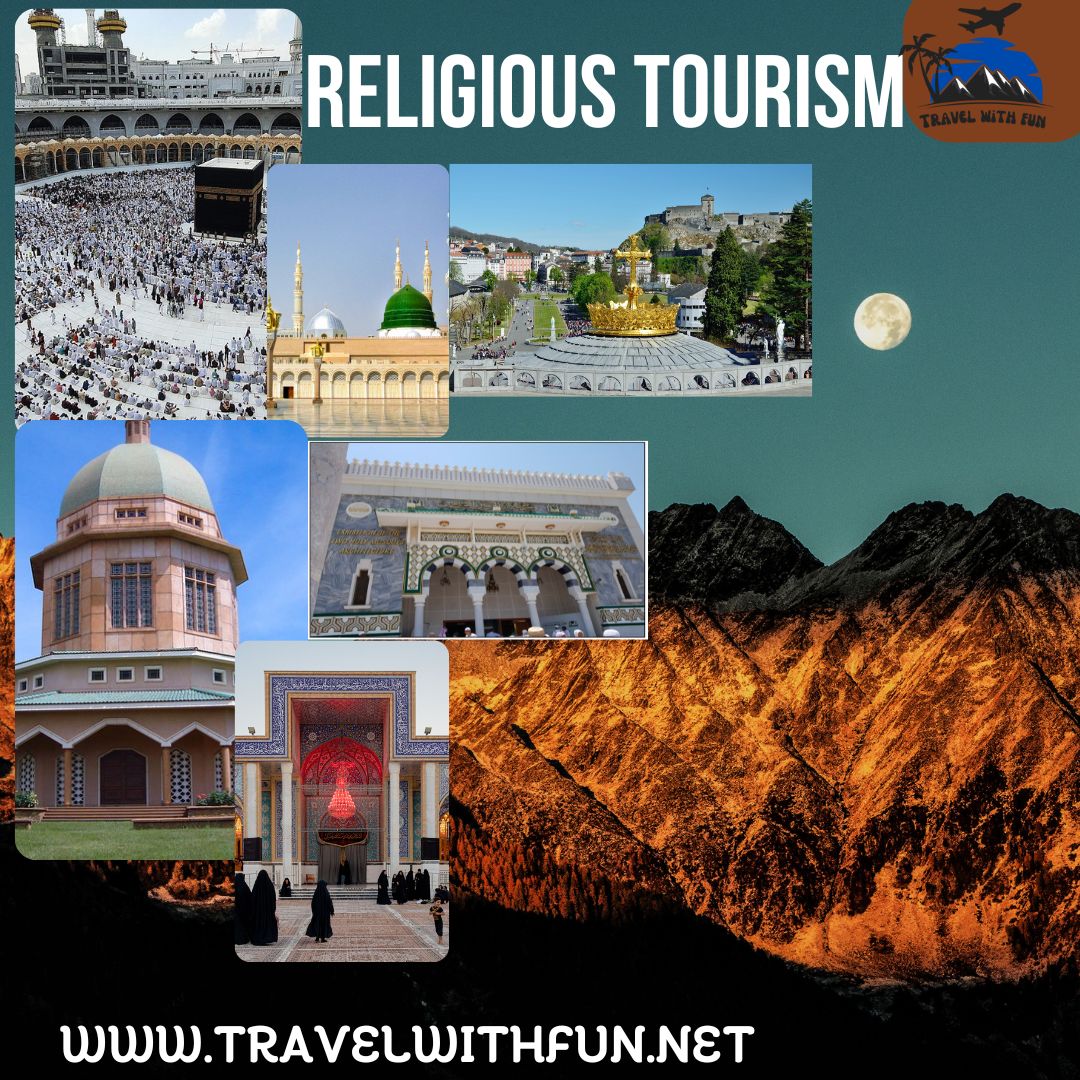in


“Exploring Spiritual Journeys: The Rise of Religious Tourism”

Presentation to Devout Tourism
Religious tourism, moreover known as confidence tourism, is a developing fragment of the travel industry that centers on going by places of otherworldly centrality. Whether it’s a travel to old sanctuaries, sacrosanct mountains, or sacrosanct hallowed places, devout tourism offers travelers the opportunity to investigate their confidence in a significant way. Journeys, in specific, speak to the heart of devout tourism, where devotees travel, regularly over long separations, to places of devout significance. These ventures are not as it were acts of commitment but moreover serve as a implies of social trade and authentic discovery.
The Verifiable Centrality of Pilgrimages
Pilgrimages have been an fundamentally portion of devout hones for thousands of a long time, with roots extending back to antiquated civilizations. From the journey courses to the heavenly city of Jerusalem to the Camino de Santiago in Spain, these ventures have played a crucial part in forming the otherworldly scene of different religions. Truly, journeys were attempted to look for divine favor, compensation, or essentially to illustrate commitment. The act of journey was regularly difficult, requiring travelers to persevere physical and enthusiastic challenges, symbolizing their otherworldly dedication.
Major Journey Locales Over Continents
Religious tourism is a worldwide wonder, with critical journey destinations spread over each landmass. Each location holds one of a kind devout and social significance, pulling in millions of pioneers yearly. In Asia, the city of Varanasi in India, one of Hinduism’s holiest cities, and the Buddhist journey circuit counting Bodh Gaya are key goals. In the Center East, the cities of Mecca and Medina in Saudi Arabia are the most loved locales in Islam, drawing millions of Muslims from around the world for Hajj, one of the Five Columns of Islam. In the mean time, in Europe, the Vatican City in Rome serves as a central point for Catholics, with St. Peter’s Basilica being one of the most critical journey destinations.
Journey Courses and Their Social Impact
The courses taken by travelers are as noteworthy as the goals themselves. These ways, frequently stamped by centuries of strides, are wealthy in history and culture. The Camino de Santiago, moreover known as the Way of St. James, is a prime illustration. This organize of journey courses over Europe leads to the Cathedral of Santiago de Compostela in Spain, where the remains of St. James are accepted to be buried. The Camino is not fair a otherworldly travel but moreover a social involvement, advertising pioneers the chance to lock in with neighborhood conventions, nourishment, and communities along the way. Essentially, the Silk Street, whereas essentially a exchange course, moreover encouraged devout journeys and the trade of otherworldly thoughts over Asia.
The Otherworldly and Individual Centrality of Pilgrimages
For numerous, journeys are profoundly individual ventures that give an opportunity for otherworldly development and reflection. The act of clearing out behind the comforts of every day life to set out on a travel of confidence permits travelers to interface more significantly with their most profound sense of being. This handle regularly includes contemplation, self-discipline, and a sense of lowliness, as travelers confront physical hardships and challenges. The goal, whereas critical, is frequently auxiliary to the otherworldly travel experienced along the way. For case, the Hajj journey to Mecca is not as it were a devout commitment for Muslims but moreover a transformative encounter that cultivates a sense of solidarity and balance among believers.
The Financial and Social Affect of Devout Tourism
Religious tourism plays a pivotal part in the economies of numerous locales. Journey locales frequently pull in millions of guests every year, giving a unfaltering stream of salary for nearby businesses and communities. The neighborliness industry, counting inns, eateries, and transportation administrations, benefits incredibly from this deluge of visitors. Besides, the conservation of devout destinations and the improvement of framework to back travelers can lead to broader financial advancement in these zones. In expansion to the financial benefits, devout tourism too cultivates social cohesion and social trade, as travelers from distinctive foundations and societies come together in a shared otherworldly experience.
Challenges in Advanced Journey Tourism
Despite its numerous benefits, devout tourism faces a few challenges in the cutting edge period. Overtourism at well known journey locales can lead to natural debasement, packing, and the misfortune of social realness. The commercialization of sacrosanct spaces, where devout destinations are changed into traveler attractions, can moreover lessen the otherworldly involvement for travelers. Also, political precariousness and security concerns in certain locales can prevent travelers and affect the openness of devout locales. To address these challenges, maintainable tourism hones are being advanced to guarantee that journey destinations are protected for future eras whereas keeping up their otherworldly significance.
The Future of Devout Tourism
As the world gets to be more interconnected, devout tourism is likely to proceed developing. Propels in transportation and communication have made it less demanding for travelers to travel long separations, and computerized stages give modern ways for people to lock in with their confidence. Virtual journeys, where people can involvement sacrosanct destinations through computerized media, are moreover developing as an elective for those incapable to travel physically. In any case, the pith of pilgrimage—an epitomized travel of faith—remains unaltered. The persevering request of devout tourism lies in its capacity to interface people with something more prominent than themselves, advertising a one of a kind mix of otherworldly fulfillment, social enhancement, and individual transformation.
Conclusion
Religious tourism and journeys over landmasses are not fair approximately going by sacrosanct places; they are around setting out on ventures that develop one’s confidence, cultivate social trade, and contribute to the financial and social well-being of districts around the world. As this shape of tourism proceeds to advance, it will stay a effective constrain that bridges the past and display, the otherworldly and the common, and the individual and the communal.

Tired of wasting time searching for businesses? I’ll extract all the relevant contacts from Google Maps for you! https://telegra.ph/Personalized-Contact-Data-Extraction-from-Google-Maps-10-03 (or telegram: @chamerion)